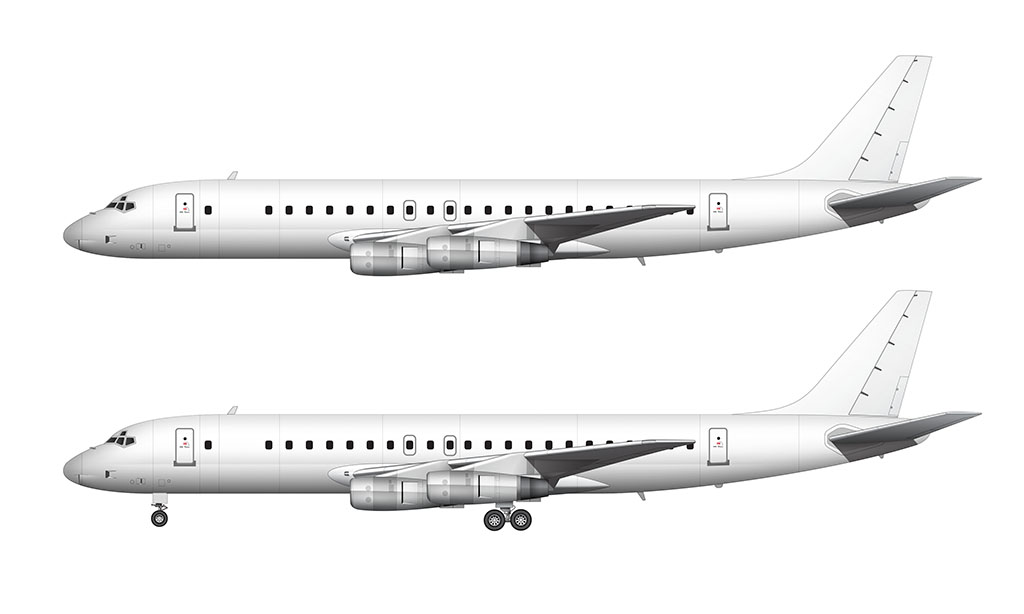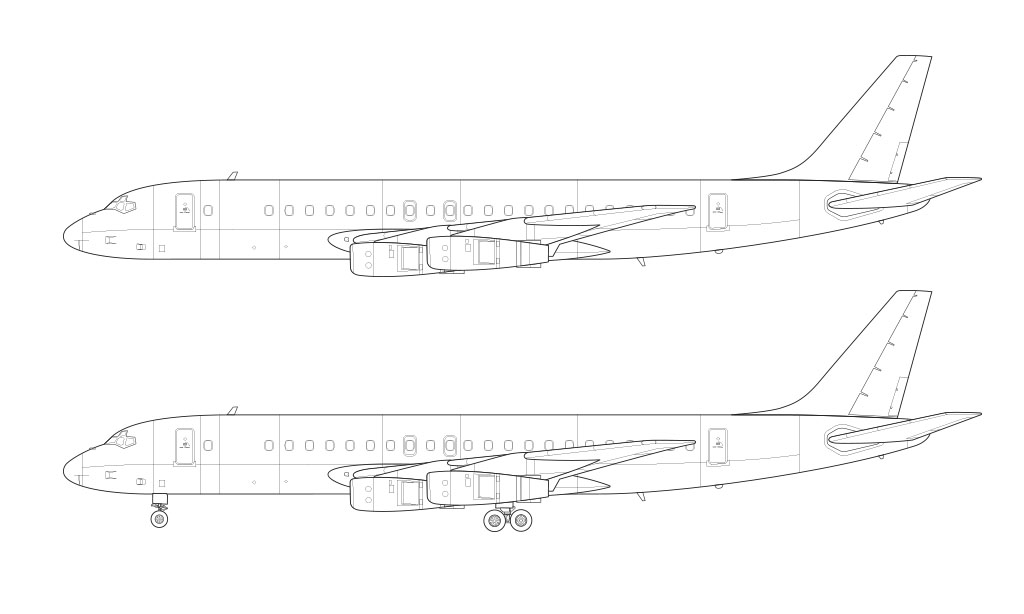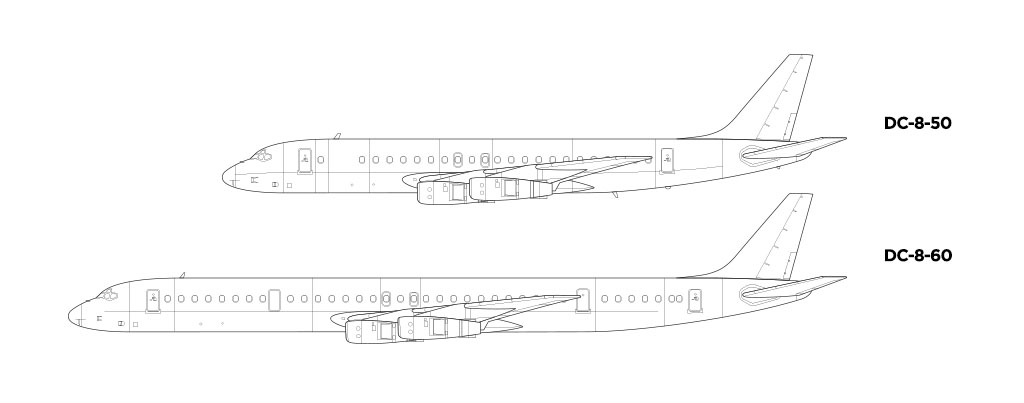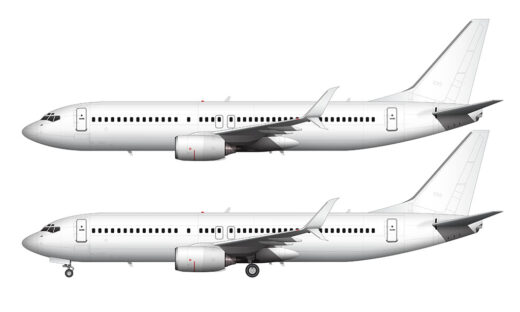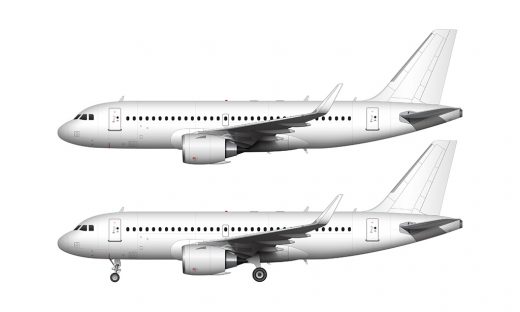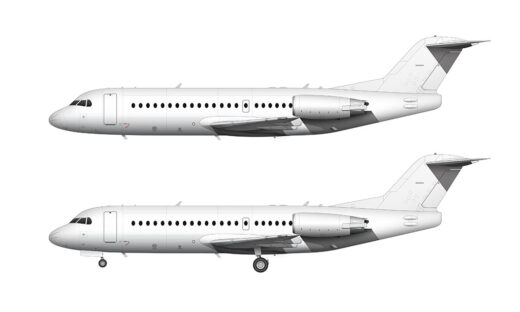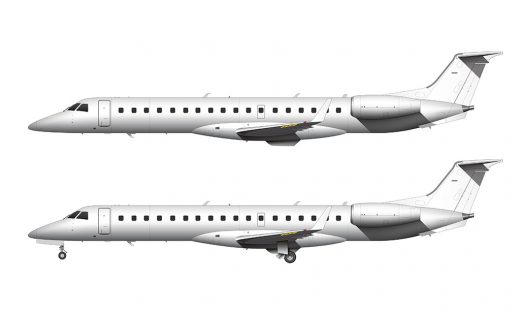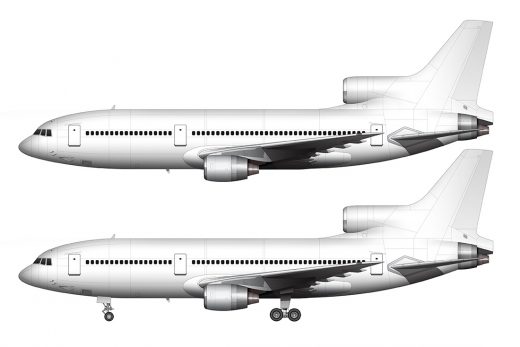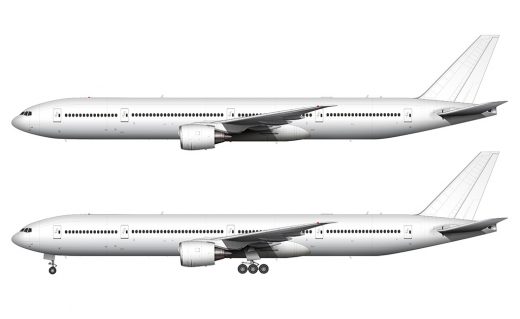Better late than never, I have finally finished my side view templates for the legendary Douglas DC-8-50. It came out of necessity actually, as I needed them for a series of other illustrations I was working on.
With everything else that I’ve been doing lately, it seems “necessity” is the only way I’ve been able to make progress on my side view aircraft template collection. Oh well. I’m just glad to have it done.
Blank side view templates of the Douglas DC-8-53
Having already created a set of side profile illustrations of the DC-8-61 several years ago, doing the -53 variant wasn’t all that big of a project. All I essentially had to do was chop a few sections out of the fuselage.

It should be noted that even though these templates are for the -53 variant, all DC-8-50s looked nearly identical. You could use these illustrations for any project needing DC-8-50 diagrams (any sub variant) and not fool anyone.
What exactly is a Douglas DC-8-50?
The DC-8-50 is a short-fuselage, medium-capacity, long range variant of the DC-8 family of aircraft. 142 were produced, making it the most common of all DC-8 variants It wasn’t the best looking though – that honor went to the DC-8-73 IMHO.
The -50 was powered by Pratt & Whitney JT3D engines – which just so happened to be the most common engine type for the Boeing 707.
The Series 50 DC-8 was the best looking of them all as far as I’m concerned. It had the perfect fuselage-to-wing ratio, and the large engines helped to make it look tougher (and more powerful) than it probably was.
I’m not a pilot, but I can’t imagine that any variant of the DC-8 was as nimble and rocket-ship like as the 757-200 was. It sure looks nice though, and that’s all that matters to me.
How is the DC-8-50 different than the DC-8-60?
An entire book could be written to describe every little difference between the 50 Series DC-8 and the 60 Series, but as an industrial designer turned aircraft illustrator, I only care about the visual differences.
Based on all the research I did prior to creating these templates, here are the most significant visual differences between these two variants:
- The DC-8-50 is 440 inches shorter than the -60. It is 240 inches shorter ahead of the wing, and 200 inches shorter behind it.
- The Series 50 and 60 shared the same wing. I’m sure there are a handful of technical differences (the natural result of safety and efficiency improvements over the years), but for all intents and purposes, the wings looked identical. They also shared the exact same dimensions.
- The engines were the same, as were the pylons.
- Fuselage diameter is exactly the same between both aircraft.
- The landing gear were nearly identical as well – there were a small number of differences, none of which changed the shape or structure of the core elements.
- The 50 Series has two less doors per side than the 60 series.
Other interesting facts about the Douglas DC-8-50
I’m really bummed that I never got the chance to get a ride on a DC-8. It was quickly disappearing from the skies just as I was coming of age, and by the time I started flying regularly, they were all gone. Nonetheless, I’ve always been interested in the “Diesel 8” (especially the 50 Series). Here’s why:
- The cargo version of the Series 50 was available in a “combi” configuration, meaning that the forward section was dedicated for cargo while the aft section was for passengers (very similar to the Boeing 737-400 Combi).
- For a fully-cargo specific configuration, airlines could order the DC-8-50 without windows. United Airlines was the only customer to do that.
- Twenty earlier versions of the DC-8 were eventually converted into -50s.
- Despite how many DC-8-50s were produced, there have only been 24 accidents and incidents involving these aircraft over the years.

